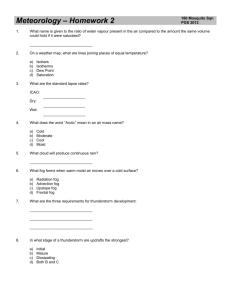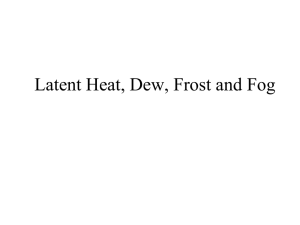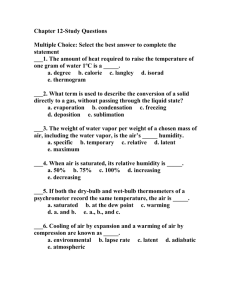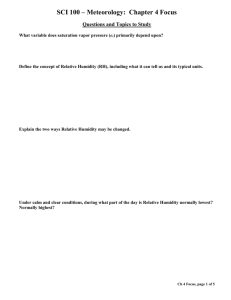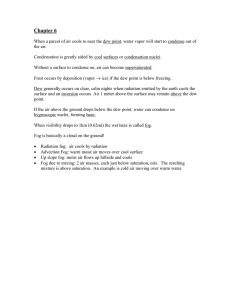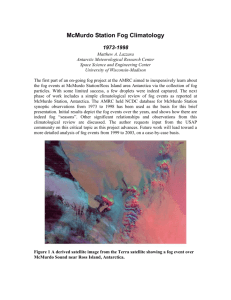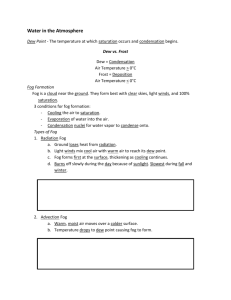Vertical Structure of the Atmosphere
advertisement
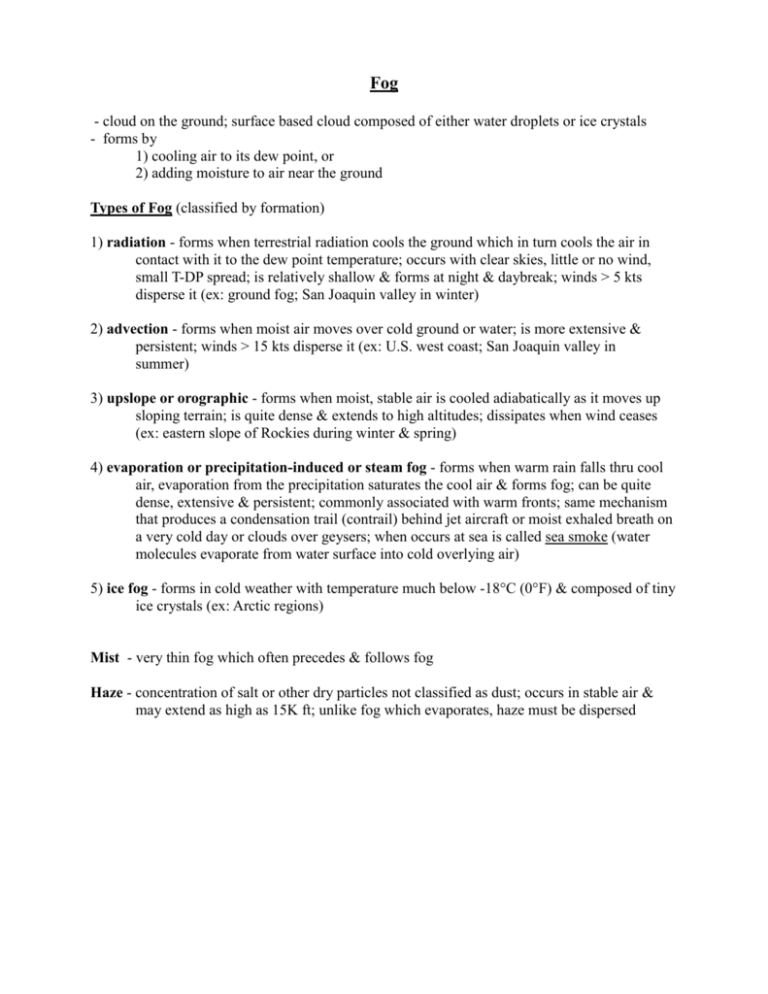
Fog - cloud on the ground; surface based cloud composed of either water droplets or ice crystals - forms by 1) cooling air to its dew point, or 2) adding moisture to air near the ground Types of Fog (classified by formation) 1) radiation - forms when terrestrial radiation cools the ground which in turn cools the air in contact with it to the dew point temperature; occurs with clear skies, little or no wind, small T-DP spread; is relatively shallow & forms at night & daybreak; winds > 5 kts disperse it (ex: ground fog; San Joaquin valley in winter) 2) advection - forms when moist air moves over cold ground or water; is more extensive & persistent; winds > 15 kts disperse it (ex: U.S. west coast; San Joaquin valley in summer) 3) upslope or orographic - forms when moist, stable air is cooled adiabatically as it moves up sloping terrain; is quite dense & extends to high altitudes; dissipates when wind ceases (ex: eastern slope of Rockies during winter & spring) 4) evaporation or precipitation-induced or steam fog - forms when warm rain falls thru cool air, evaporation from the precipitation saturates the cool air & forms fog; can be quite dense, extensive & persistent; commonly associated with warm fronts; same mechanism that produces a condensation trail (contrail) behind jet aircraft or moist exhaled breath on a very cold day or clouds over geysers; when occurs at sea is called sea smoke (water molecules evaporate from water surface into cold overlying air) 5) ice fog - forms in cold weather with temperature much below -18°C (0°F) & composed of tiny ice crystals (ex: Arctic regions) Mist - very thin fog which often precedes & follows fog Haze - concentration of salt or other dry particles not classified as dust; occurs in stable air & may extend as high as 15K ft; unlike fog which evaporates, haze must be dispersed
